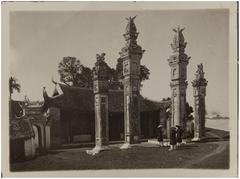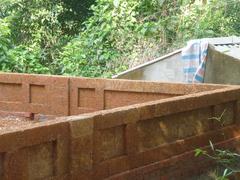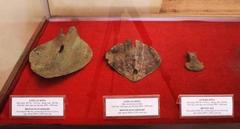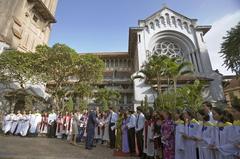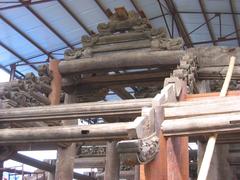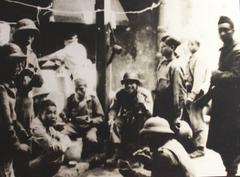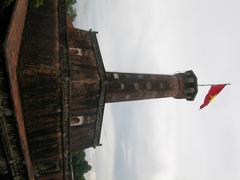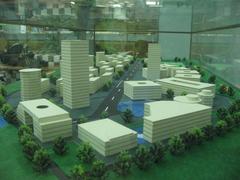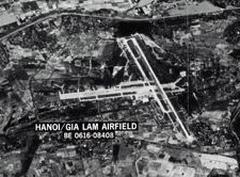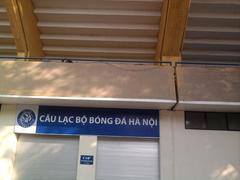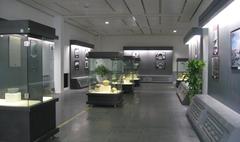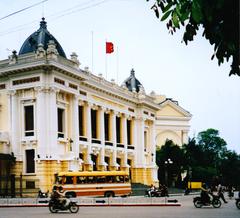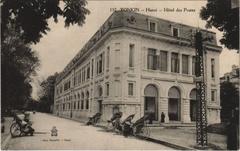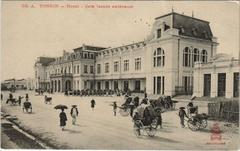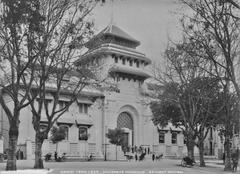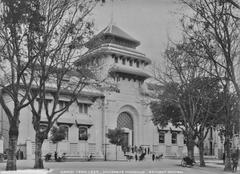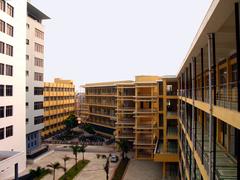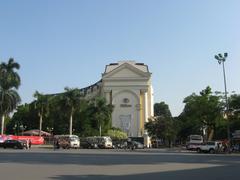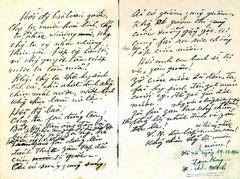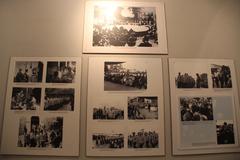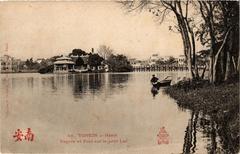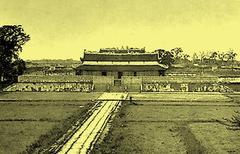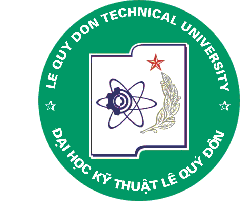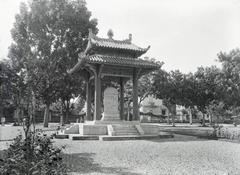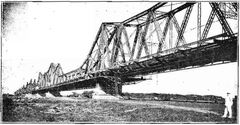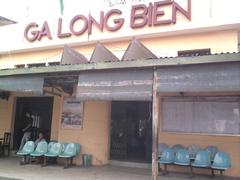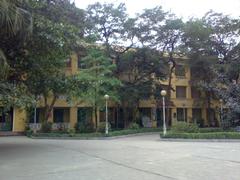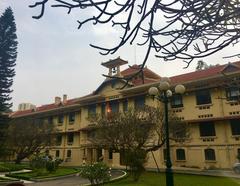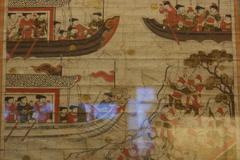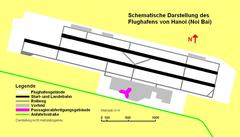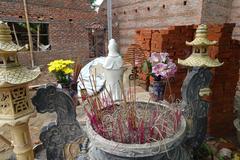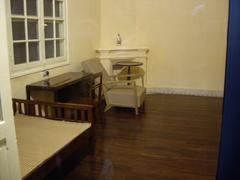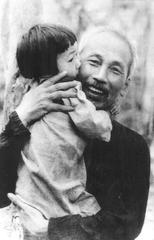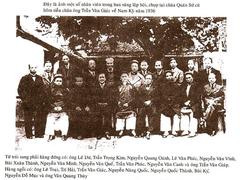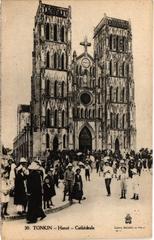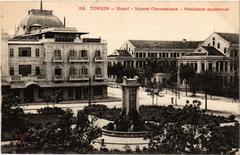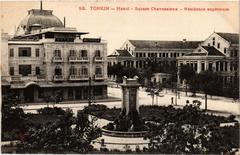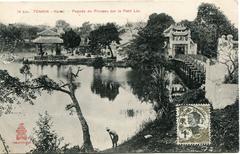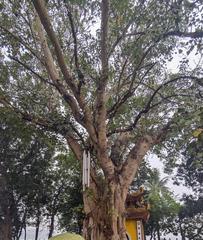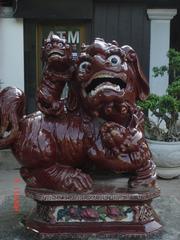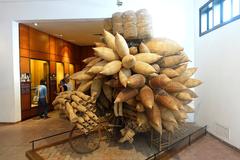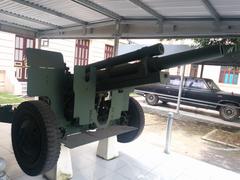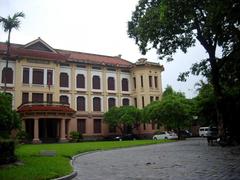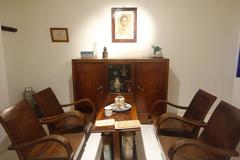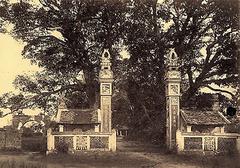Dong Ngac Hanoi Vietnam: Visiting Hours, Tickets, and Historical Sites Guide
Date: 04/07/2025
Introduction
Just 10 kilometers northwest of Hanoi’s Old Quarter, Đông Ngạc Village—often called the “Village of Scholars” (Làng Khoa Bảng)—invites visitors to step back in time and experience a unique blend of Vietnam’s intellectual and rural traditions. As one of the oldest continuously inhabited settlements in the Red River Delta, Đông Ngạc holds a special place in Vietnamese history, renowned for its academic heritage, well-preserved architecture, and vibrant community life. This detailed guide covers everything you need to know: visiting hours, tickets, history, cultural significance, and practical travel tips for making the most of your visit.
For further reading, see CNN Travel, Vietnam News, and Hanoi Times.
Table of Contents
- Introduction
- Origins and Historical Development
- Architectural Heritage and Preservation
- Intellectual and Cultural Legacy
- Spiritual and Community Life
- Traditional Crafts and Family Lineages
- Visiting Information: Hours, Tickets, and Accessibility
- Key Historical and Cultural Landmarks
- Festivals and Local Experiences
- Practical Travel Tips and Nearby Attractions
- Frequently Asked Questions (FAQ)
- Conclusion
- References
Origins and Historical Development
With a history stretching back over a millennium, Đông Ngạc’s early settlement was fostered by its strategic location on the fertile banks of a dragon-shaped river bend (CNN Travel). Originally named “Đông Ếch” (Frog Village), it evolved through the Trần and Lê dynasties into its current name, reflecting both its longevity and cultural transformation (Hanoi Times). The village’s prosperity was rooted in agriculture, but its true distinction lies in a scholarly tradition that produced numerous mandarins and doctorate holders—particularly during the Lê, Mạc, and Nguyễn dynasties (Vietnam News).
Architectural Heritage and Preservation
Ancient Residences and Village Layout:
Đông Ngạc is a showcase of northern Vietnamese architectural heritage. Over 100 ancient houses—some dating to the 17th century—feature valuable woods like ironwood and sến, three- or five-chamber layouts, and signature four-sided tiled roofs (Vietnam Discovery). The “three-compartment, two-wing” (nhà ba gian hai chái) design is common, with central halls for ancestor worship and flanking wings for living quarters (Hanoi Local Tour). Many homes are set within lush courtyards and gardens of betel, areca, and bamboo.
Communal Houses and Temples:
The communal house, dating from 1653, is the village’s spiritual heart and is symbolically shaped like a dragon. Its halls, gates, and wells align with the dragon’s anatomy—an auspicious motif in Vietnamese culture (CNN Travel). The house also preserves 45 royal decrees and is surrounded by ancient banyan trees, adding to its sacred atmosphere.
Colonial Influences:
French colonial architecture is evident in early 20th-century buildings like the primary school, which incorporate Western elements such as balconies and arches while retaining Vietnamese motifs like dragons and lotuses (Vietnam News).
Village Gates and Alleys:
Distinctive laterite and brick gates, inscribed with calligraphy, guard the entrances to Đông Ngạc’s hamlets. Winding alleys—lined with mossy walls and ancient wells—invite exploration and photography (Viet Center Tourist).
Intellectual and Cultural Legacy
Village of Scholars:
Đông Ngạc is celebrated for its academic achievements, producing over 100 mandarins and 25 doctorate holders by the Nguyễn dynasty (VinWonders). Symbols of books and scholarly motifs are carved into village gates and communal house altars. Phan Phu Tiên, the village’s first doctor, and numerous other scholars contributed significantly to Vietnamese administration and literature (Hanoi Times).
Modern Notables:
Recent figures like Deputy Prime Minister Phạm Gia Khiêm and writer Hoàng Tăng Bí highlight Đông Ngạc’s continuing influence.
Spiritual and Community Life
Pagodas and Religious Sites:
Đông Ngạc Pagoda (Chùa Đông Ngạc) and Tu Khanh Pagoda (built in the 1650s) are focal points for local Buddhist worship and festivals. Both house ancient statues, bells, and steles—some dedicated to both Buddhist and scholarly figures (CNN Travel).
Village Festivals:
The annual Đông Ngạc Village Festival, held in spring, features processions, ceremonial offerings, ca trù music, and folk games, drawing crowds and fostering community spirit.
Traditional Crafts and Family Lineages
Handicrafts:
The village is known for traditional crafts, particularly ceramics and wood carving. While large-scale production has waned, local artisans still create pottery and woodwork reflecting Đông Ngạc’s heritage (Vietnam News).
Family Lineages:
Extended families maintain ancestral halls and detailed genealogical records. Confucian ideals of filial piety, education, and collective responsibility shape village social structure.
Visiting Information: Hours, Tickets, and Accessibility
- Visiting Hours: Most historical sites are open daily from 7:00 or 8:00 AM to 5:00 or 6:00 PM. Hours may vary during festivals.
- Tickets: Entry to the village and communal houses is free; some sites or special exhibitions may charge a nominal fee (20,000–50,000 VND).
- Guided Tours: Local operators offer guided tours, highly recommended for historical context and access to private homes or workshops.
- Accessibility: The main communal house and pagodas are accessible, though narrow and uneven alleys may pose challenges. Assistance is available upon request.
- Getting There:
- By Taxi/Car: About 20–30 minutes from Hanoi Old Quarter.
- By Motorbike/Bike: Suitable for the adventurous; rentals available.
- By Bus: Public buses stop near the village; check routes from Hanoi city center.
Key Historical and Cultural Landmarks
- Communal Houses: Đình Đông Ngạc and Đình Vẽ, each with unique woodwork and ceremonial halls.
- Ancestral Residences: Many are open for tours by appointment.
- Temple Complex: Honors the six founding families; vibrant during village festivals.
- Pagodas: Chùa Đông Ngạc and Tu Khanh Pagoda, important for Buddhist worship.
- Village Market: Experience daily life and sample local delicacies in the morning market.
- Village Gates and Alleys: Architectural highlights perfect for photography.
- Educational Sites: Stone steles and relics celebrate the village’s scholarly achievements.
Festivals and Local Experiences
- Village Festival (Spring): Features processions, folk performances, calligraphy, and traditional games.
- Handicraft Workshops: Arrange sessions with local artisans in pottery or wood carving.
- Culinary Experiences: Sample bánh cuốn, chè, and other regional specialties at the market or during festivals.
Practical Travel Tips and Nearby Attractions
- Best Time to Visit: Spring (March–May) for pleasant weather and festivals; early morning or late afternoon for photography.
- Nearby Attractions:
- Temple of Literature (Vietnam’s first university, 10 km away)
- Bat Trang Ceramic Village
- Red River banks and rural scenery for cycling or photography
- Dress Code: Modest attire is required in religious and ancestral sites.
- Photography: Permitted in public areas; seek permission inside private homes or during ceremonies.
Frequently Asked Questions (FAQ)
Q: What are Đông Ngạc’s visiting hours?
A: Most sites are open from 7:00 or 8:00 AM to 5:00 or 6:00 PM daily. Check locally during festivals.
Q: Is there an entrance fee?
A: Entry is free for most sites; guided tours and special exhibitions may charge a small fee.
Q: How do I get to Đông Ngạc from Hanoi Old Quarter?
A: By taxi, motorbike, or public bus—about a 20–30 minute journey.
Q: Are guided tours available?
A: Yes, through local tour operators or by arrangement onsite.
Q: What other attractions are nearby?
A: Temple of Literature, Bat Trang Ceramic Village, Chem Pavilion, and Tay Ho Palace.
Conclusion
Đông Ngạc Village offers a rare, immersive experience into Vietnam’s scholarly heritage, traditional architecture, and enduring rural culture. Whether wandering its historic alleys, participating in vibrant festivals, or exploring ancient houses, visitors will find a living museum that bridges the past and present. Combine your visit with nearby cultural sites for a richer understanding of Hanoi’s heritage, and use local resources for up-to-date information on hours, events, and guided experiences.
Visuals and Media
Images to enhance your visit or website:
- “Đông Ngạc Village communal house showcasing traditional Vietnamese architecture”
- “Map of Đông Ngạc Village location near Hanoi”
- “Historic brass bells at Tu Khanh Pagoda in Đông Ngạc Village”
Related Articles
References and Official Sources
- Exploring the nostalgic beauty of Đông Ngạc Village in Hà Nội, 2023, Vietnam News
- Hanoi’s ancient village in the eyes of a foreigner, 2023, Hanoi Times
- Đông Ngạc Hanoi Vietnam, 2023, CNN Travel
- Đông Ngạc Ancient Village, 2024, Vietnam Discovery
- Đông Ngạc Ancient Village: A Village of Scholars, 2023, Vietnam Travel
- Làng Đông Ngạc Hà Nội, 2023, VinWonders
- Exploring Đông Ngạc Ancient Village, 2024, Hanoi Local Tour
- Top Five Charming Ancient Villages in Hanoi, 2024, Viet Center Tourist
- Hanoi Old Quarter Guide: Temple of Literature, 2023
Plan your visit to Đông Ngạc today to experience the enduring spirit, beauty, and intellectual legacy of one of Hanoi’s most treasured villages.


